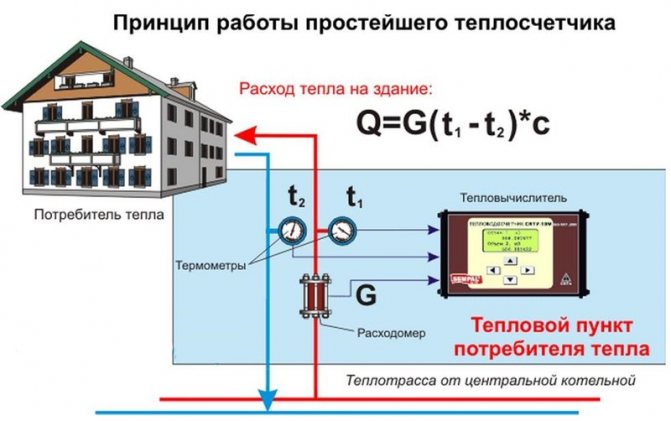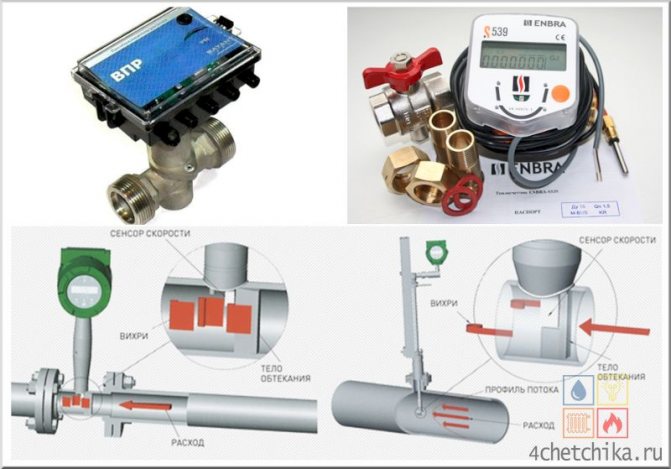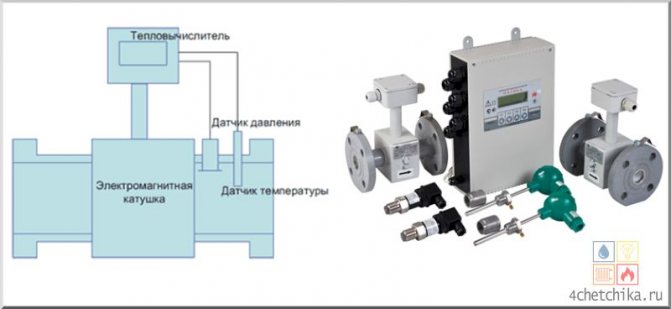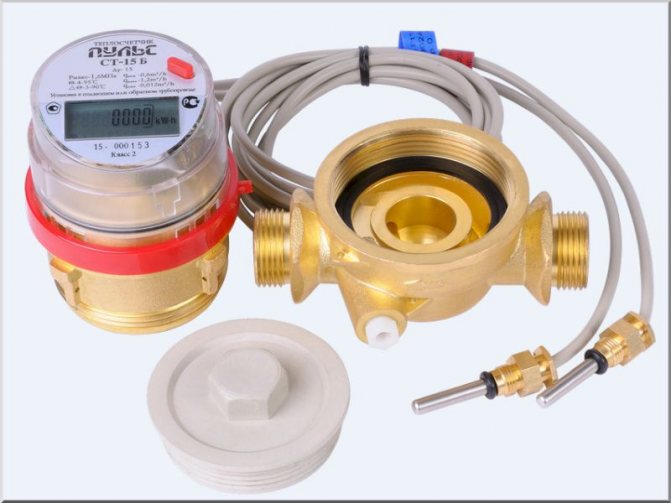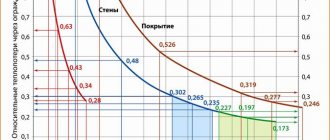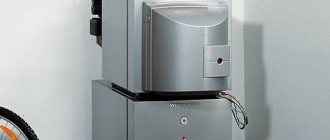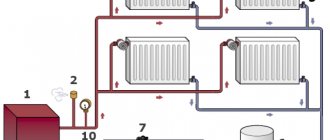Tachometric heat meters
Tachometric heat meters (vane, turbine, screw) are the simplest devices. The principle of operation of mechanical heat meters is based on converting the translational motion of the fluid flow into the rotary motion of the measuring part. Mechanical heat meters consist of a heat meter and mechanical rotary or vane water meters. These are still the cheapest heat meters, but the cost of special filters that are installed in front of each mechanical heat meter must be added to their cost. As a result, the price of such kits is 10-15% lower than other types of heat meters, but only for nominal pipeline diameters not exceeding 32 mm. For pipelines of larger diameter, the price of mechanical and other heat meters is practically equal or even higher.
The disadvantages of mechanical heat meters include the inability to use them with increased water hardness, the presence of small particles of scale, rust and scale in it, which clog filters and mechanical flow meters. For these reasons, in almost all of Russia, the installation of mechanical flow meters is allowed only in apartments, small private houses, etc. In addition, mechanical flow meters generate the highest water pressure losses compared to other types of flow meters.
Home counter benefits
If you are ripe for the decision to install a personal heat meter in an apartment, remember that by itself it will not give an economic effect, but would save on heating within reason, reflecting current consumption. You will notice that the slightest downward temperature fluctuation will be reflected in the contents of the wallet towards the increase vector.
The counter allows
control consumption in the event that the unit is made correctly, and the thermostat controls the temperature. Having lowered your degrees before leaving for work, at the end of the month your rationality will turn economic bonus. Only reducing the parameters in 1C to 6% saves heat energy.
If you are thinking about installing the device in an apartment, you should know that the procedure is unreasonably complicated, you will need to collect the required list of documents, and prepare for unforeseen expenses.
Electromagnetic heating meter
This is an expensive model of heating devices, and belongs to the most accurate devices. The principle of operation of the electromagnetic meter is the passage of the coolant through the device, while the electromagnetic field conducts a weak current. This device needs to be serviced, that is, periodically cleaned.
Fig. 4 Electromagnetic heat meters
An electromagnetic device consists of 3 main parts:
- Primary converter;
- An electronic unit that can operate both from batteries and from the mains;
- Temperature sensors.
In this case, the electromagnetic thermal device can be installed in any position (horizontal, vertical, or at an angle), but this is only in the case when the area where the meter is installed is constantly filled with a coolant.
If the pipe diameter does not match the instrument flange diameter, adapters can be used.
Ultrasonic meters
Principle of operation.
The operation of the counter is based on the following effect: the rate of passage of ultrasound through the liquid directly depends on the flow rate. The signal is supplied from a special device and received by the receiver. According to the signal received after passing through the coolant, readings of the heat consumption are taken.
Purpose and types
... Such devices can be used in open and closed heating systems. Heat meters of ultrasonic type can be time and frequency, correlation and Doppler.
Features of the
... Ultrasonic devices can be used in systems with a clean coolant. If the coolant is not clean, it contains multiple inclusions of dirt, rust, the meter may have a significant error. However, with a pure coolant, the accuracy of the device is better than that of analogs. Also, ultrasonic meters are highly reliable.
The principle of operation of the heat meter
01 January 2020. Written by Super User. Posted in Useful articles
Heat meters by their nature come with a mechanical and ultrasonic flow meter from which the cost of an apartment heat meter is formed. The heat meter is installed both on the supply and return pipelines of the heating system, which is permitted by the manufacturer. How does a heat meter work, a heat meter for an apartment. The principle of operation is based on the amount of water that passes through the installed heat meter and the temperature difference between the coolant in the supply and return pipelines. As everyone knows, hot water enters the batteries (radiators) and heats the air inside the room from which we get the difference in water temperatures at the inlet and outlet from the apartment.
Q - the amount of consumed heat
m - mass flow rate of the coolant, [m 3 / hour]
c - heat capacity of the coolant, [Gcal / kg⋅ ° С]
t1, t2 are the temperatures of the coolant at the inlet to the system and at the outlet from it, respectively,
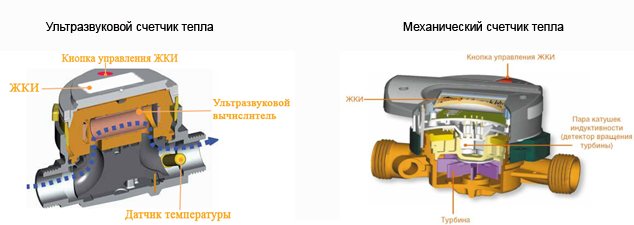
The heat meter data from the water flow sensor is transmitted to the calculator, and also data from two temperature sensors are received to them, which are respectively located in the supply and return pipelines. The calculator processes the initial data and is stored in the archive. All necessary information for the user is transmitted to the screen and can also be read by the data collection system via radio channel or wired Mbuss.
Report generation:
You have installed an individual heat meter (heat meter) and the question immediately arises of how to read information and generate a report for a heat supply organization. It is necessary to study the operating instructions for the installed heat meter, which describes how to correctly view the necessary information. Depending on the manufacturer of the heat meter, the heat energy is displayed on the display in different physical quantities. This is necessary, 1 Gcal = 4.187 GJ = 1163 kW / h, for the correct transfer of thermal power. The operating organization often issues invoices according to the tariff in Gcal, so the transfer system must be understood.
Each tenant who has bought a heat meter needs to know that together with the actual readings of an individual heat meter for the apartment, it is necessary to pay for heating in common areas, such as staircases, elevators, basements, on average 0.5 UAH. for 1 m 2 of the apartment's own area.
The methodology for calculating this payment is based on the following legal documents:
Decree from 21 linnya 2005 p. N 630 About the hardening of the Rules for the provision of services from the centralized scorching, constant cold
This hot water and water supply This standard contract for the provision of services from the centralized scorching, supply of cold and hot water and water supply.
Order of October 31, 2006 N 359 About the hardening of the Methodology for the development of a bit of warmth, created by the scorched masses of the living quarters of large apartment buildings, so pay for the scorching
Order of February 22, 2008 N 47 About the hardened Recommendations for storing the Methods of developing the amount of warmth that was created for the scorched masses of the zaholnye koristuvannya of large apartment buildings, that is, pay for the scorching.
Sheet No. D11-10 / 37466 dated 10/14/2002.According to the clarifications of the Ukrainian National Social Insurance Agency on civil engineering, 1,2-recommendations for the efficiency for the reduction of heat energy, vitrized on the scorched pretense of the out-of-the-box soundtrack.
What you need to know before setting the meter to heat
Remember that the readings of individual meters are taken into account only when a general house heat meter is installed in the house, and in addition, at least 75% of the residents of this building have also installed (or will install by common agreement) such devices for individual use.
You also need to check: whether the technical conditions in the room correspond to those necessary for the installation of such devices.
If the above conditions are met, then you need to contact such state organizations as "GosEnergo" and "TeploKanal" and obtain permission from them. Then - make an application to a company that has a license to install devices.
After the meter is purchased and installed, you should contact your heat supplier. His representative must pay a visit and put special seals.
Household heating meter features of the device
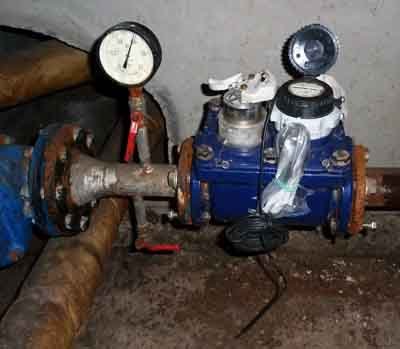

Household heating meter.
Such a device is used in residential buildings. At a meeting of residents, the issue of installing a common house heating meter is being decided - a common device has a number of advantages over an individual meter. Firstly, the common house meter will be much cheaper. Secondly, the readings of the device will be calculated in accordance with the number of residents, that is, you do not need to pay so much. The responsible person, who is elected at the meeting, pays for this utility service. This person is also responsible for the purchase of the meter. A general house meter is much more expensive than an individual type of device, but if divided equally between the residents, it will turn out to be profitable.
The general house meter can be installed by hand. To do this, you need to connect it to the central pipe, which, through the house manifold, provides the house with heating. The second method of installation is installation in the return line. This pipe removes the waste type coolant from the radiator. Both methods of connecting the device are not characterized by the complexity of the work.
The radiator, inside which the heat exchange process is regulated, is at the same time a device for connecting the meter. To avoid problems with its installation, invite a specialist. However, for the services of the master you will have to pay an additional amount. The general house heating meter is installed in the radiator: this will make it easier for you to take readings.
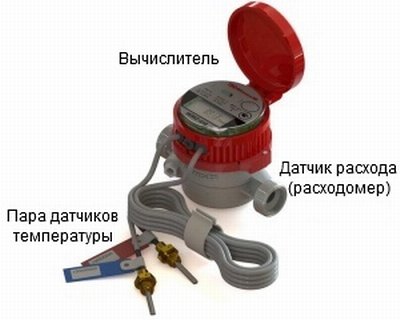

Household heating meter device.
An individual type meter is bought and installed in the apartment by the owner. He pays for everything: the device, the services of the master, receipts. That is, the heat meter belongs to him personally, he is fully responsible for it. An ordinary such device is an ideal solution in case of abandoning a common house meter. The presence of this device greatly simplifies your life: so you will be calm about the honesty of paying for heating. Therefore, it is necessary to install a heat meter, even if the neighbors are against the common system.
There are some difficulties in installing an individual meter. For example, if in your house the wiring is vertical, then the work scheme takes place in several stages, since there is no central part of the heat supply. That is, it is necessary to introduce a riser into all rooms of the apartment.
The problem is solved by attaching the heat meter to the radiator. The radiator regulates the heat transfer process, and the fixed device regulates the amount of heat produced. At the same time, the counter works efficiently and for a long time. The price of a meter for heating in an apartment is much more expensive, since it is considered more reliable and has a warranty from the manufacturer.
What parameters should be used to choose a meter for heating?
If you firmly decided that you should take heat metering into your own hands, but you have not yet decided how to choose the right heat meter, then you need to take into account the parameters of both the heating system and the heat carrier (water) itself. You should find out the following:
- Is heating supplied to the basement, is there lighting and ventilation. Most often, the heating unit is placed in the basement;
- Where do the heating pipes go to the basement? The rules indicate that the location of the heating unit should be near the valves;
- How much water is there;
- Check the pressure level of the coolant (most often this is indicated in the heating unit);
- Find out to what temperature the coolant is heated and how to regulate it;
- The number of pipes entering the house and how many of them are involved in the heating system;
- What material was used to insulate the pipes (if any);
- The number of apartments in the building and the total number of residents;
- Hot water circulation activated.
If you managed to collect all this information, then you can proceed directly to the choice of the counter. But as you know, the collection of such an amount of information involves considerable energy and time expenditures (at least a couple of weeks), so it is better to entrust this work to the designers.
Metering devices and savings
Installing devices does not yet guarantee a real reduction in service fees. What needs to be done to reduce the amount in bills? Having installed, apartment metering devices, in conjunction with regulating valves, you will receive and pay exactly as much as you need.
With this approach, your dependence on the actions of your neighbors will be less.
Practical scheme for installing heating meters:
- In the place of the branch of the common riser, a meter is placed. These works should be performed only by professionals and sealed by specialists from the management company.
- Thermostats are installed near heating radiators. With the help of them, the coolant supply is regulated. If there is no money for such a solution, then an ordinary valve can also be installed. Remember that it is not advisable to use screw versions. Because the gasket can close the pipe at an unexpected moment, which will lead to a decrease in the temperature in your apartment.
- Ideally, thermostats should be mechanical or electronic. The essence of their work is simple: they have a temperature sensor, which is located outside the zone of air flows rising from the battery. After proper tuning, they will provide the system capacity that is necessary to maintain the programmed air temperature in the apartment.
What actions can be taken by the owners of premises equipped with a standing heating system? It is very expensive to install equipment regulating the coolant supply on each battery. Such a project is unlikely to recoup the initial investment. Do not forget about the need for regular maintenance of these facilities. The owners can be helped by the installation of electronic thermometers. They are also called heat distributors. It continuously records the temperature of the air and the surface of the battery.
The cost of such a device is low (about 1000 rubles). You need to attach it directly to the radiator. There will be a good incentive to conserve heat, since the payment will be for the actually received resource.
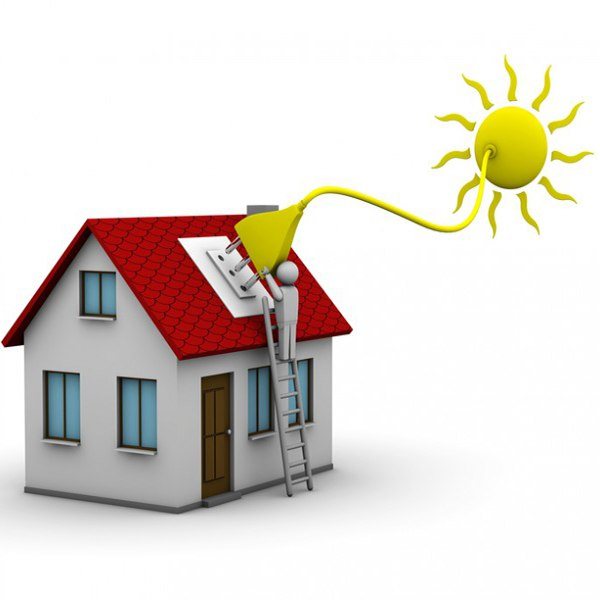

Heating system in an apartment building Heat meters for an apartment building How to change the management company in an apartment building
When is it possible and advisable to install a heating meter?
It should be understood that such a meter is not a panacea for high heating costs - it cannot save heat by itself. Its task is to keep an accurate record of the resources spent on maintaining a comfortable temperature in your apartment during the heating season.Therefore, before deciding to buy a heat meter, try to calculate how much the price for heating can be reduced approximately, if available, and how long it will take to buy and install the device. Then compare the figures obtained with the average life of the device, which is 6-8 years.
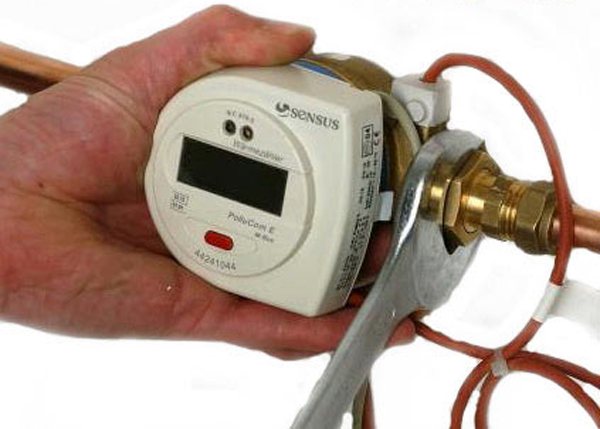

The heating meter cannot save heat by itself
Important! Do not forget about verification - the state of the heating meter should be regularly checked by licensed specialists. In this case, the costs of this event will be borne by you.
In addition to the economic aspect, technical factors also affect the feasibility of installing a heat meter. First, you need to find out what scheme the heating system in your house is based on. If it was erected a long time ago, then, most likely, a vertical divorce of the heating riser is used in it - the supply and discharge pipes go upwards through the whole house, radiators are located from them as branches. In this case, you will need to install several heat meters - for each individual battery. Considering cost and lifespan, there may not be any savings in the end. In addition, the accuracy of heat meters installed on a separate radiator sometimes leaves much to be desired - too small a temperature change is poorly recorded by thermal sensors.


Diagram of heating systems with vertical wiring. In this case, in apartments, heating batteries are often supplied from separate risers, which significantly complicates the arrangement of individual metering devices


There are relatively inexpensive and simple individual heat meters installed on each individual radiator. But often the accuracy of their counting leaves much to be desired.
Secondly, you need to know if there is a general house heat meter and in what condition it is. If the device is installed relatively recently and works without any problems, then there is no strict need for an individual meter. It's another matter if there is no common house metering tool - in such cases, the heating agent supplying companies use increasing coefficients when calculating the cost of heating services, and installing a heating meter in your own apartment can significantly reduce utility costs.
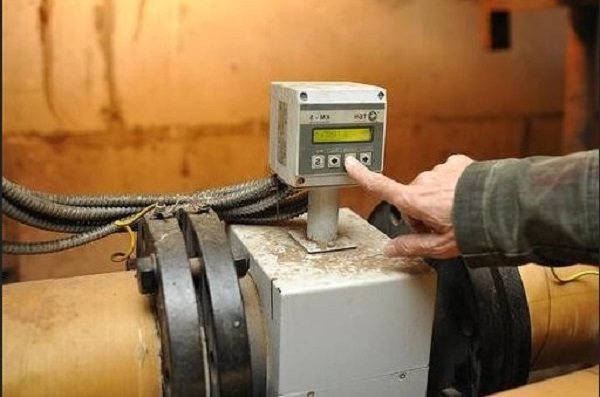

Household heat meter
Thirdly, assess whether you are ready to monthly calculate the amount of heat and transfer it to the HOA representatives or the management company. Remember that these activities should be carried out with special care - an incorrectly entered number can negate all savings.
Fourthly, be prepared to spend money not only on drawing up a project for installing a heating meter and on the device itself, but also on installation, as well as sealing water meters. Of course, it is possible to install the meter yourself, but there are a number of problems here. The first is that it is simply dangerous to interfere with home heating systems without special training and skills. Second, if mistakes are made when installing the meter with your own hands, then the accuracy of the metering of the consumed energy may suffer. As a result, there will be no savings benefits. Third, there may be difficulties with the acceptance of the device - representatives of the HOA or the management company may refuse to register and seal the meter installed not by licensed specialists, but by the owner of the apartment himself. Of course, such a refusal can be disputed, but this will require additional (and quite considerable!) Expenditures of effort, time and money.


Remember, you need to check the meters every 4 years. If a malfunction is detected, it is mandatory to dismantle the meter and seal it
Length of the straight section of the pipeline.
Many types of flow transducers require long straight runs before and after the installation site for correct measurement.This is true for ultrasonic and differential pressure flow meters. But in practice, in the absence of adapted premises, it is not always possible to satisfy this requirement.
Measurement channels.
Modern heat meters are complex metering systems that can service metering simultaneously through two or more heat inputs and through the hot water supply line. In this case, the heat meter becomes universal and can satisfy the requirements of a wide variety of heat consumers.
The presence of a diagnostic system.
Most heat meters are equipped with a self-diagnostic system, which provides periodic automatic check of the device status and provides information about the nature of the failures that have occurred, the time of the beginning of the failures and their duration. At the same time, the devices can register abnormal situations that occur in the heat supply system, such as the current flow value out of the range set for the device or outside the settings entered in the device memory, power outage, unbalance of masses in pipelines, etc.
Energy independence.
Energy independence should be considered from two positions: interruptions to the mains (220 V) power supply and operational safety. Power outages can be dealt with using uninterruptible power supplies, and safety is important when operating heat meters installed in damp and humid rooms (basements), as well as in social facilities: in kindergartens, schools, etc.
Operating conditions.
When choosing heat meters, it is necessary to take into account the quality of the heat carrier. If there is a likelihood of the presence of mechanical and gas impurities in the water, then it is not recommended to use ultrasonic and tachometric heat meters.
In this case, electromagnetic and vortex heat meters are preferable. If the water contains ferromagnetic impurities, it is not recommended to use tachometric heat meters and vortex ones with electromagnetic signal pickup. If there are impurities in the network water that form films or deposits on the inner surface of pipelines, it is not recommended to use electromagnetic heat meters, etc.
Completeness of delivery.
When using single heat meters or composite heat meters obtained from one supplier, the compatibility of blocks and elements and their overall performance are guaranteed. Otherwise, there may be problems associated with the adaptation of the heat meter to specific conditions of use and do not appear at the commissioning stage.
Calibration interval.
Since the calibration interval is an economic category (the cost of periodic calibration is up to 10% of the cost of a heat meter), you should choose heat meters with the largest calibration interval. Currently, it is for different heat meters from 2 to 5 years.
The presence and depth of the archive.
Almost all modern heat meters archive information with the possibility of subsequent retrieval of archived data directly from the device or using additional terminals
In this case, the ability to display archived data on the instrument panel is of great importance
Cost and reliability.
The cost of a set of various heat meters fluctuates in a wide range and depends on the thermal load of the building, the number of heat measurement channels, the need to measure the pressure in the pipeline, the presence of additional external equipment (printer, modem), supplier (domestic, foreign) and other factors. The cost of a heat meter directly correlates with reliability.
Varieties of heat meters according to the principle of operation
General heat meters that are installed at home with a centralized heating is large-sized expensive devices. They have a wide diameter for inlet and outlet pipes (from 32 to 300 mm), since a large amount of coolant is passed through themselves. The purchase and installation is carried out at the expense of the residents of the house, and the testimony is controlled either by a responsible person appointed by the residents themselves, or by a representative of the utilities.
Individual counters the price is much lower. They are designed for lower bandwidth (no more 3 cubic meters per hour) and therefore much more compact.


Such devices can mount both for the entire apartment (with a horizontal arrangement of the heating system), and for each battery separately (if there are several vertical risers).
In new residential complexes, apartment heat meters are often installed at the stage of development.
Any heat meter is equipped with computing module, temperature and flow measurement sensors... But according to the principle of measuring the amount of consumed heat carrier, the meter can be next type:
- electromagnetic;
- mechanical;
- ultrasonic;
- vortex.
Each type of device there are advantages and disadvantagesrelated to design features.
Electromagnetic
The measuring principle is based on on electromagnetic induction... The device is hydrodynamic generator... An electric current is excited from the influence of a magnetic field in water, the amount of heat is determined by the field strength and the potential difference at oppositely charged electrodes. because of high sensitivity heat meter requires very high quality installation and regular maintenance... Without periodic cleaning, an error in the readings appears in the direction of increase.
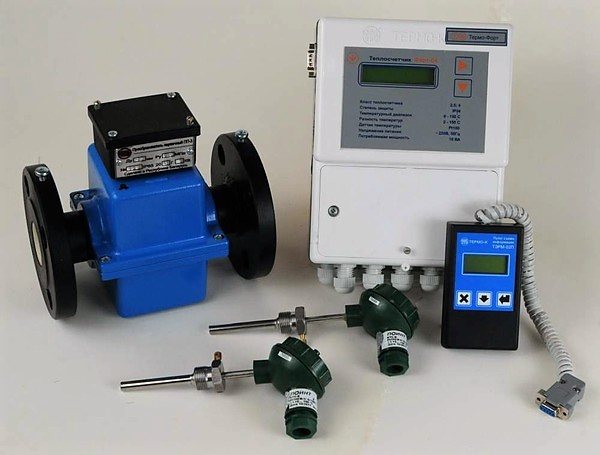

Photo 1. Electromagnetic heat meter Fort-04 with 2 flange flow meters from the manufacturer Thermo-Fort.
The heat meter may react to electronic devices nearby. Possesses great precision accounting for many parameters. Working both from the mains and from batteries... Most compact type of heat meter. Recommended for installation with increased system pressure. Installation is possible at any angle, but subject to the constant presence of a coolant in the installation area.
Reference. If a pipe diameter heating and meter flange does not match, then it is allowed to use adapters.
Mechanical
A flow meter in such a device rotary type (vane, turbine or screw). The principle of operation is similar with a water meter, only in addition to the quantity, the temperature of the water passing through the mechanism is also taken into account. The advantages of this type appliances as follows:


- low cost;
- non-volatility (powered by batteries);
- lack of electrical elements (allows installation in adverse conditions);
- the possibility of vertical installation.
Little increases the cost instrument mandatory installation of a strainer, without which the internal mechanism quickly clogs and wears out. Due to the impossibility of using at high rigidity and contamination of the coolant with rust, mechanical meters are allowed to be installed only as individual ones.
Essential disadvantages applies and lack of information storage per day, as well as impossibility of remote reading data. In addition, the device is very sensitive to water hammer, and the pressure loss in the heating system is higher than that of other types of models.
Ultrasonic: can measure and regulate
Measurement is carried out with ultrasound... Depending on the flow rate of the coolant, the transit time of the ultrasonic wave from the transmitter, installed on one side of the pipe, to the receiver, located opposite, changes. Appliance does not affect the hydraulic pressure in the system... If the coolant is clean, then measurement accuracy is very high, and the service life is practically infinite... With dirty water or pipes, the error of the heat meter data increases.


Photo 2.Ultrasonic heat meter ENKONT with a stainless steel primary flow transducer,.
Great information content such a counter, and the readings of the device can also be read remotely... But you will have to spend money on UPS, since the device works only from the mains. Models meet with additional regulation function water supply on two different channels... This allows you to change the speed of the coolant and the degree of heating of the radiators. Due to their reliability, ultrasonic devices are widely used despite their high cost.
Vortex
The principle of operation is due to a physical phenomenon vortex formation when water meets an obstacle... Is involved permanent magnet, which is placed outside the pipe, triangular prismmounted in a pipe vertically and measuring electrode, a little further along the direction of movement of the coolant.
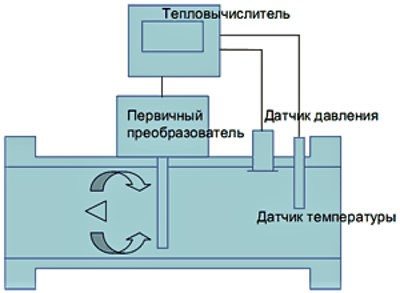

Flowing around the prism, water vortices (pulsating flow pressure changes). By the frequency of their formation, information about the volume of the coolant that has passed through the pipe is displayed.
The advantage of this type of heat meters is pollution independence pipes and water. This allows you to measure the temperature without error in old houses with worn-out iron heating wiring.
Installed on both vertical and horizontal pipe sections. The operation of the device is affected only by sudden changes in the flow rate of the coolant and large particles of debris or air in the system. Energy consumption instrument minimum and one battery will last for several years. Indications and malfunction signals are transmitted remotely by radio.
Installing a heating meter
Any installation work of the heating system (including the installation of a heat meter on a battery) is carried out only by specialists. To start installing the meter for heating, you will need:
- Order a device installation project.
- Coordinate the package with documents for permission to install with utilities.
- If the commission approves, then the project is implemented and heating meters are installed in the apartment.
- The meter should be registered with the public utility (otherwise it is considered invalid), after which it is given for use.
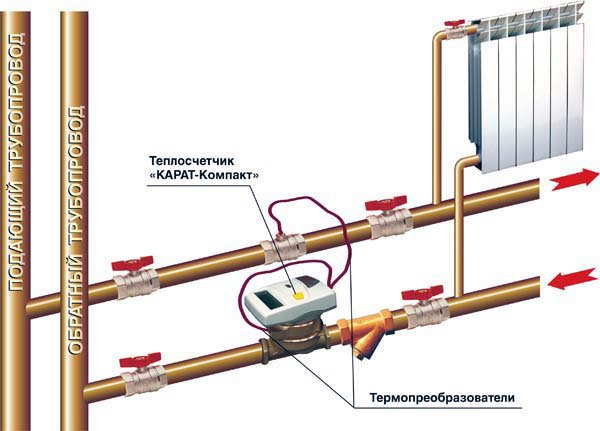

Installation diagram of meters in an apartment in the heating system.
After the listed procedures, you can call specialists. They must:
- Implement this project.
- Coordinate documentation on heat supply matters.
- Mount the accounting device.
- Officially register your device.
- Hand over the heat meter for use and transfer it to the supervision of a supervisory organization.
Any meter must have a passport and certificate. The documentation indicates the period of the first verification by the manufacturer.
This period is also indicated on the device itself in the form of a stamp. During use of the heat meter, it is necessary to check its operability. The verification of the counters is done depending on the model of the device. It usually takes place every 4 years. After the expiration of the term on the stigma, you should contact either Rostest at your place of residence, or an organization that specializes in checking meters. Manufacturers should also check the devices (as a rule, each company has a service).
How to pay for heating by the meter? To pay for utilities, you should look at the number shown on the device. Next, fill out the receipt, in it you will see the difference between the current and previous readings. Finally, multiply the number on the meter by the current tariff and pay for heat energy.
The principle of operation of the heat meter
This device has 2 sensors, one of which is called a flow sensor, the other is called a temperature. The task of the first is to calculate the amount of consumed heating, the second is to measure the temperature. The main part of any meter is a heat calculator. This is a kind of calculator, it gives the counting results.For this, the amount of heating consumed by the meter is multiplied by the temperature. This way you get the readings from which you pay later.
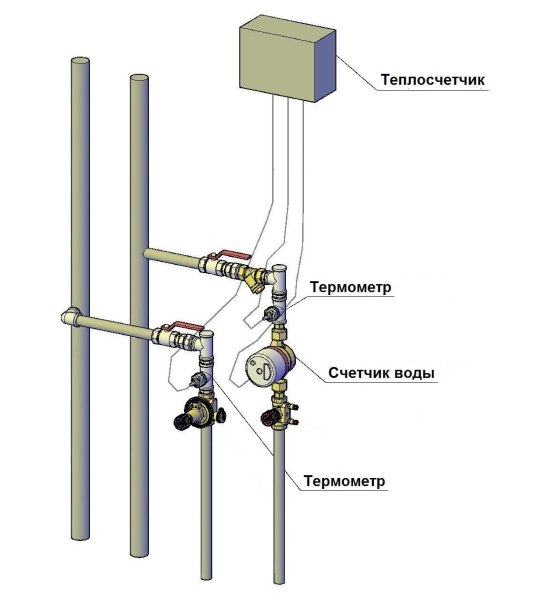

Installation of a heat meter.
Checking counters. Verification must be performed once every 4 years. The purpose of this procedure is to determine the suitability of the instrument. The verifier must make an appropriate note in the passport of the device and write you a certificate, which will be a confirmation of the meter's performance.
How is the calculation made for a heat meter in an apartment
In order to make the information on calculating the size of the heating payment more understandable, we will consider each method of calculating the payment separately, using one or another calculation formula for a specific example. When choosing a calculation option, it is necessary to pay attention to all the components that determine the calculation methodology.
Calculation No. 1
An apartment building does not have a common (collective) metering device, while the calculation of the size of the payment is carried out during the heating season.
If a common house (collective) metering device for heat energy is not installed on an apartment building, the calculation of the amount of payment for heating in your apartment (residential building) during the heating period should be made according to formula No. 2 of Appendix No. 2 of the Rules approved by the Decree of the Government of the Russian Federation of 06.05. 2011 No. 354, based on:
- The total area of your apartment;
- Heating utilities consumption rate;
- Heat tariff approved for your region and provider of this service.
Formula number 2
Pi = Si x NT x TT,
Where:
Si - the total area of your living quarters (apartment);
NT is the standard for the consumption of communal heating services;
TT is the heat tariff set for your region and service provider.
Calculation example:
On your home there is no general metering device for thermal energy (heating). The calculation of the amount of payment for heating is carried out only during the heating season.
Calculation data:
- The total area of your apartment is 62 square meters (m2);
- The consumption rate for heating for your region is set at 0.02 gigacalories per 1 square meter of the total area;
- The heat energy tariff for your region and service provider is 1,600 rubles per 1 gigacalorie.
Heating bills for your apartment will be calculated in the following order:
62 m2 x 0.02 GKL x 1 600 rubles. = RUB 1984.00
Thus, the payment for heating in your apartment during the months of the heating period will be - 1984.00 rubles.
Calculation No. 2
An apartment building does not have a common (collective) metering device, while the calculation of the amount of payment is carried out evenly throughout the calendar year.
If a common house (collective) metering device for heat energy is not installed on an apartment building, the calculation of the amount of payment for heating in your apartment (residential building) during the calendar year should be made according to the formula No. 2 (1) of Appendix No. 2 of the Rules approved by the Decree of the Government of the Russian Federation dated 06.05.2011 No. 354, based on:
- The total area of your apartment;
- Heating utilities consumption rate;
- The coefficient of the frequency of payments by consumers for utility services for heating;
- Heat tariff approved for your region and provider of this service.
Formula 2
Pi = Si x (NT x K) x TT,
Where:
Si - the total area of your living quarters (apartment);
NT is the standard for the consumption of communal heating services;
K is the coefficient of the frequency of payment by consumers for utility services for heating, equal to the number of months of the heating period, including incomplete months;
TT is the heat tariff set for your region and service provider.
It should be noted that according to the Government Decree of August 27, 2012 No. 857, the value of K - the coefficient of the frequency of payments by consumers, is determined by dividing the number of months of the heating period in a year by the number of calendar months in a year. In this case, the heating utility bills are charged in each billing period of the calendar year.
Calculation example:
On your home there is no general metering device for thermal energy (heating). The calculation of the amount of payment for heating is carried out throughout the entire calendar year.
- the total area of your apartment is 62 square meters;
- the heating consumption standard for your region is set at 0.02 gigacalories per 1 square meter of the total area;
- heat tariff for your region and service provider is RUB 1,600 per 1 gigacalorie;
- the coefficient of the frequency of payment by consumers is 0.583 (that is, the number of months of the heating period in your region - 7 months must be divided by the number of months in a year - 12 months: 7/12 = 0.583).
Heating bills for your apartment will be calculated in the following order:
62 m2 x (0.02 Gl x 0.583) x 1 600 rubles. = 1,156.67 rubles.
Thus, the monthly payment for heating in your apartment for the entire calendar year will be - 1156.67 rubles.
Calculation No. 3
A common house (collective) metering device is installed on an apartment building, not all residential and non-residential premises are equipped with individual metering devices for heat energy, the calculation of the amount of payment is carried out only during the heating season.
If a common house (collective) metering device for heat energy is installed on an apartment building, and not all residential and non-residential premises are equipped with individual metering devices for heat energy, the calculation of the amount of payment for heating in your apartment (residential area) during the heating period should be made according to the formula No. 3 of Appendix No. 2 of the Rules approved by the Decree of the Government of the Russian Federation of 06.05.2011 No. 354, based on:
- The volume of heat energy, determined according to the indications of the general house metering device;
- The total area of your apartment;
- The total area of all residential and non-residential premises in an apartment building;
- Heat tariff approved for your region and provider of this service.
Formula number 3
VД - the volume (quantity) of heat energy consumed according to the indications of the general house (collective) metering device;
Si is the total area of your apartment;
Sob - the total area of all residential and non-residential premises in an apartment building;
TT is the heat tariff set for your region and service provider.
Calculation example:
On your home a common house metering device is installed for thermal energy (heating). Individual metering devices for heat energy are absent in all premises of an apartment building. The calculation of the amount of payment for heating is carried out only during the heating season.
- The amount of heat energy, determined according to the readings of the general house meter for January 2020, is 150 gigacalories;
- The total area of your apartment is 62 square meters;
- The total area of residential and non-residential premises located in the house is 6,000 square meters;
- The heat tariff set for your region and service provider is 1600 rubles per 1 gigacalorie.
Heating bills for your apartment will be calculated in the following order:
150 x 62/6000 x 1600 = 2,480.00 rubles.
Thus, the heating fee for your apartment for January 2018 will be 2,480.00 rubles.
Calculation No. 4
A common house (collective) metering device is installed on an apartment building, not all residential and non-residential premises are equipped with individual metering devices for heat energy, calculation of the amount of payment evenly throughout the entire calendar year.
If a common house (collective) metering device for thermal energy is installed on an apartment building, and not all residential and non-residential premises are equipped with individual metering devices for thermal energy, the calculation of the amount of payment for heating in your apartment (residential area) during the heating period should be made according to the formula No. 3 (1) of Appendix No. 2 of the Rules approved by the Decree of the Government of the Russian Federation No. 354 dated 06.05.2011, based on:
- Average monthly volume of heat energy consumed for heating needs for the previous year;
- The total area of your apartment;
- Heat tariff approved for your region and provider of this service.
Formula number 3
Pi = Si x VT x TT,
Where:
Si is the total area of your apartment;
VT is the average monthly volume of heat energy consumed for heating needs in the previous year. This volume is calculated based on the readings of the general house metering device with which the apartment building is equipped, the number of months in a year and the total area of all residential and non-residential premises in an apartment building;
TT is the heat tariff set for your region and service provider.
Calculation example:
On your home a common house metering device is installed for thermal energy (heating). Individual heat metering devices are not installed in all premises of an apartment building. The calculation of the amount of payment for heating is carried out only throughout the entire calendar year.
- The amount of thermal energy, determined according to the readings of the general house metering device for 2020, is 750 gigacalories;
- The total area of residential and non-residential premises located in the house is 6,000 square meters;
- The total area of your apartment is 62 square meters;
- The heat tariff set for your region and service provider is 1600 rubles per 1 gigacalorie.
Heating bills for your apartment will be calculated in the following order:
First of all, the average monthly volume of heat energy for the previous year is calculated:
750 HL / 12 months / 6000 m2 = 0.011 HL.
Then the monthly heating bill for 2018 is calculated:
62 m2 x 0.011 x 1600 = 1,091.20 rubles.
Thus, the monthly heating fee for your apartment during 2020 will be 1,091.20 rubles.
It should be noted that when calculating the size of the fee in this way, that is, using the average monthly readings of the general house meter for the previous year, in the first quarter of the year following the calculated one, it is necessary to adjust the amount of the fee.
This means that in the first quarter of 2020, you will be charged or debited additional fees, depending on the actual readings of the general metering device for 2020.
Correction of the size of the board in this case is made according to the formula No. 3 (2) based on:
- The size of the board based on the readings of the general house meter for the billing year;
- The total area of your apartment;
- The total area of all residential and non-residential premises in an apartment building;
- The total amount of payment for heat energy for the previous year for your apartment.
Formula No. 3 (2)
Where:
Pkipr - the amount of payment for a utility service for heating, determined based on the readings of a collective (common house) meter installed in an apartment building for the past year;
Si is the total area of your apartment;
Sob - the total area of all residential and non-residential premises in an apartment building;
Pfn.i is the total amount of utility bills for heating in your apartment for the past year.
An example of an adjustment calculation:
- The amount of thermal energy, determined according to the readings of the general house meter for 2020, is 850 gigacalories.
- The total area of residential and non-residential premises in the house is 6,000 square meters.
- The total area of your apartment is 62 square meters.
- The heat tariff set for your region and service provider is 1600 rubles per 1 gigacalorie.
- The heating fee for the previous year for your apartment is 1,091.20 rubles. x 12 months = 13,094.40 rubles.
The calculation of the size of the adjustment will look like this:
850 hl x 1600 rub. = 1,360,000 rubles. - the amount of payment for heating in your house for the whole of 2020 according to the indications of the general house metering device.
1,360,000 x 62 / 6,000 - 13,094.40 rubles. = RUB 958.93
So the amount of 958.93 rubles. is subject to additional accrual on your apartment in the first quarter of 2020, since the actual accrued amount for 2020 is less than the amount of the fee determined according to the readings of the general metering device.
It is worth noting that if the total amount of the fee, determined according to the actual readings of the general house metering device, is less than what was charged to you during the billing year, then in the first quarter of the month following the billing one you will have to make a charge for this service, that is, reduce the amount ...
For example, with all the same indicators in the example above, we will only change the amount of the payment for 2020 based on the readings of the general house metering device. It will be equal to 700 Gl.
Then the board size adjustment will look like this:
700 hl x 1600 rub. = RUB 1,120,000 - the amount of payment for heating in your house for the whole of 2020 according to the indications of the general house metering device.
RUB 1,120,000 x 62 m2 / 6000 m2 - 13 094.40 rubles. = - 1521.07 rubles.
The amount to reduce the size of the fee according to the adjustment for your apartment will be 1,521.07 rubles.
Calculation No. 5
To calculate the amount of payment for utility services for heating when equipping an apartment building with a common (collective) metering device and individual in all residential and non-residential premises of an apartment building, one formula is used when calculating the amount of payment for heating during the heating period and when calculating the amount of payment throughout the calendar of the year.
In order to make the calculation more understandable, we will analyze each case separately.
So, the procedure and example when calculating the amount of payment for heating only during the heating season.
A common house (collective) metering device is installed on an apartment building, all residential and non-residential premises are equipped with individual metering devices for heat energy, the amount of payment for heating is calculated only during the heating season.
If a common house (collective) metering device for heat energy is installed on an apartment building, and all residential and non-residential premises are equipped with individual metering devices for heat energy, the calculation of the amount of payment for heating in your apartment (residential area) during the heating period should be made according to formula No. 3 (3) Appendix No. 2 of the Rules approved by the Decree of the Government of the Russian Federation of 06.05.2011 No. 354, based on:
- The volume of heat energy, determined according to the indications of your individual metering device;
- The volume of thermal energy consumed according to the indications of the general house metering device in all premises, with the exception of thermal energy, consumed in all residential and non-residential premises;
- The total area of your apartment;
- The total area of all residential and non-residential premises in an apartment building;
- Heat tariff approved for your region and provider of this service.
Formula No. 3 (3)
Where:
Vin - the volume (amount) of heat energy consumed in your apartment during the billing period, determined according to the indications of an individual or general (apartment) meter.
Viod is the volume (amount) of thermal energy provided for the billing period to an apartment building equipped with a collective (common house) metering device for thermal energy, with the exception of the volume (amount) of thermal energy consumed in all residential or non-residential premises in an apartment building, which is determined by formula:
Where:
Vд - the volume (amount) of heat energy consumed for the billing period in an apartment building, determined according to the indications of a collective (general) metering device,
Si is the total area of your apartment;
Sob - the total area of all residential and non-residential premises in an apartment building;
TT is the heat tariff established in accordance with the legislation of the Russian Federation.
Calculation example:
On your home a common house metering device is installed for thermal energy (heating). Individual metering devices for heat energy are installed in all rooms of an apartment building. The calculation of the amount of payment for heating is carried out during the heating season.
- The amount of heat energy consumed by your apartment in January 2020 is 1.2 Gl.
- The amount of thermal energy, determined according to the readings of the general house meter for January 2020, is 65 gigacalories.
- The amount of heat energy consumed in all residential and non-residential premises in January 2020 is 53 Gl, according to the readings of individual metering devices.
- The total area of residential and non-residential premises in the house is 6,000 square meters.
- The total area of your apartment is 62 square meters.
- The heat tariff set for your region and service provider is 1600 rubles per 1 gigacalorie.
The heating fee for your apartment for January 2020 will be calculated in the following order:
First of all, the volume of heat energy provided for the billing period to an apartment building is calculated, with the exception of the amount of heat energy consumed in all residential or non-residential premises in an apartment building, that is, the value -
65 hl - 53 hl = 12 hl.
Then the heating bills in January 2018 for your apartment are calculated:
(1.2 GL + 12 GL x 62 m2 / 6000 m2) x 1600 rubles. = RUB 2,118.40
Thus, the heating fee for your apartment for January 2018 will be 2,118.40 rubles.
And now, the procedure and example when calculating the amount of heating bills for the entire calendar year.
A common house (collective) metering device is installed on an apartment building, all residential and non-residential premises are equipped with individual metering devices for heat energy, the amount of payment for heating is calculated throughout the entire calendar year.
If a common house (collective) metering device for heat energy is installed on an apartment building, and all residential and non-residential premises are equipped with individual metering devices for heat energy, the calculation of the amount of payment for heating in your apartment (residential area) during the entire calendar year should be made according to the formula No. 3 (3) of Appendix No. 2 of the Rules approved by Decree of the Government of the Russian Federation No. 354 dated 06.05.2011, based on:
- Average monthly volume of heat energy, determined according to the indications of your individual metering device for the previous year;
- The average monthly volume of heat energy consumed according to the indications of the general house meter in all premises, with the exception of heat energy consumed in all residential and non-residential premises, for the previous year;
- The total area of your apartment,
- The total area of all residential and non-residential premises in an apartment building;
- Heat tariff approved for your region and provider of this service.
Formula No. 3 (3)
Where:
Vin - the volume (amount) of heat energy consumed in your apartment for the billing period, determined based on the average monthly readings of your individual or general (apartment) meter for the previous year.
Viod is the volume (amount) of thermal energy provided for the billing period to an apartment building equipped with a collective (common house) metering device for thermal energy, with the exception of the volume (amount) of thermal energy consumed in all residential or non-residential premises in an apartment building, which is determined by formula:
Where
Vd - the volume (amount) of heat energy consumed for the billing period in an apartment building, determined based on the average monthly readings of a collective (common house) meter for the previous year;
Si is the total area of your apartment;
Sob - the total area of all residential and non-residential premises in an apartment building;
TT is the heat tariff established in accordance with the legislation of the Russian Federation.
Calculation example:
On your home a common house metering device is installed for thermal energy (heating). Individual metering devices for heat energy are installed in all rooms of an apartment building. The calculation of the amount of payment for heating is carried out throughout the entire calendar year.
- The amount of heat energy consumed in your apartment based on the average monthly readings of your individual meter for the previous year is 0.7 Gl .;
- The amount of heat energy, determined by the average monthly readings of the general house metering device for the previous year, is 44 gigacalories;
- The amount of thermal energy consumed in all residential and non-residential premises is 40 Gl, based on the average monthly readings of individual metering devices for the previous year;
- The total area of residential and non-residential premises in the house is 6,000 square meters.
- The total area of your apartment is 62 square meters;
- The heat tariff set for your region and service provider is 1600 rubles per 1 gigacalorie.
Heating bills for your apartment on a monthly basis throughout the entire calendar year will be calculated in the following order:
First of all, the volume of heat energy provided for the billing period to an apartment building is calculated, with the exception of the amount of heat energy consumed in all residential or non-residential premises in an apartment building, that is, the value -
44 hl - 40 hl = 4 hl.
Then the monthly heating fee for your apartment is calculated:
(0.7 hl + 4 hl x 62 m2 / 6000 m2) x 1600 rubles. = 1,186.13 rubles.
Thus, the monthly payment for heating in your apartment during the entire billing year will be - 1186.13 rubles.
It should be noted that when calculating the size of the fee in this way, that is, using the average monthly readings of the general house and individual metering devices for the previous year, in the first quarter of the year following the calculated one, it is necessary to adjust the amount of the fee.
This means that, for example, in the first quarter of 2020, you will be charged or debited a fee, depending on the actual readings of general house and individual metering devices for 2020.
Correction of the size of the board in this case is made according to the formula No. 3 (4) based on:
- The size of the board based on the actual readings of the general house and individual metering devices for the billing year;
- The size of the payment based on the average monthly volumes of general house and individual metering devices, calculated for the year.
Formula No. 3 (4)
Pi = Рkpi - Рnpi,
Where:
Рkpi - the amount of payment for heat energy consumed over the past year in your apartment, determined according to formula 3 (3) based on the readings of your individual or common (apartment) meter and the readings of the collective (common house) heat meter.
Рnpi - the amount of payment for heat energy, charged for the past year for your apartment, determined according to formula 3 (3) based on the average monthly volume of heat energy consumption for the previous year.
An example of an adjustment calculation:
- The amount of payment for heat energy consumed in your apartment based on the actual readings of individual and common house (collective) metering devices for the year is 14,000 rubles;
- The amount of payment for heat energy consumed in your apartment based on the average monthly readings of individual and general house (collective) metering devices for the year is 13,000 rubles.
The calculation of the size of the adjustment will look like this:
RUB 14,000 - 13,000 rubles. = 1,000 rubles.
So the amount of 1,000 rubles. is subject to additional accrual for your apartment in the first quarter of 2020, since the actual accrued amount for 2020 is less than the amount of the fee determined according to the indications of individual and general metering devices.
It is worth noting that if the total amount of the fee, determined according to the actual readings of individual and general house metering devices, is less than what was charged to you during the billing year, then in the first quarter of the month following the billing you will have to make a charge for this service, that is, reduce the size of the board.
For example, with all the same indicators in the example above, we will only change the amount of payment for 2020 based on the readings of an individual and general-purpose metering device. It will be equal to 11,500 rubles.
Then the board size adjustment will look like this:
RUB 11,500 - 13,000 rubles. = RUB 1,500
The amount to reduce the amount of payment for heating according to the adjustment for your apartment will be 1,500 rubles.
How a heat meter works, types and characteristics of these devices
For this reason, accounting for the consumption of consumed thermal energy is possible only when installing a separate meter for each radiator, which is economically impractical. In this case, it is recommended to install a group metering device either on the house as a whole, or on a separate entrance (although the latter option is used very rarely).
So, where to start work on installing a heat energy meter:
- It is necessary to obtain a document called technical conditions from the local heat supply organization.
The technical conditions usually indicate the place and method of installation, the requirements for the meter (nominal bore diameter, temperature range and other data), in addition, a schematic diagram of the installation with certain regulatory requirements in terms of some dimensions must be attached.Heat meter installation project
- Based on the technical conditions, the homeowner himself has the right to decide which meter to put on heating, but it is not recommended to make a choice on his own. The fact is that the next document to be obtained is a project for installing a metering device for the received heat energy.
The development of project documentation should be carried out by a firm that has the appropriate license. Be prepared for the development of the project will take a significant amount of time, while the cost of this document is commensurate with the price of the purchased meter.
But it is worth paying tribute to the designers, in many cases they advise the metering device that is most suitable for certain conditions, so you should listen to their advice.
The main thing is not to be mistaken in choosing an organization that will develop a project for installing a heat meter, try to give preference to trusted companies with real reviews.
- The developed project is subject to obligatory agreement with the heat supplying organization.
Although serious designers solve all these issues themselves thanks to long-established working relationships, however, this may affect the cost of project development services. - Based on the permits received, you can already choose a specific meter.
Usually there is an opportunity to purchase 2-3 modifications from different manufacturers. - The installation work should be entrusted to certified companies. Self-installation of a heat meter or the services of dubious specialists can turn into problems when putting the meter into operation.
- Upon completion of all installation work, the meter must be accepted by representatives of the supplier of heat resources.
On average, the entire procedure associated with installing a heat energy meter can take 1-6 months, it all depends on the amount of money invested and the promptness of all organizations involved.
Advantages and disadvantages
It is no secret that most of the heating networks are in a deplorable state, as a result, energy losses on the way to the consumer can reach 50%.
The heat meter installed at the input of the consumer records only the quality indicators of the energy that has reached the consumer, and, accordingly, the supplier cannot attribute these losses to the buyer. This factor also stimulates the heat supply organization to introduce energy-saving technologies and improve the quality of heat supply.
The rather high cost is the only drawback of the heat meter. The initial cost estimate, in addition to the cost of the device itself, includes:
- Development of design documentation for the metering unit.
- Obtaining the necessary permits from the supervisory authorities.
- Installation and commissioning works.
In addition to the above, the cost of checking the device is added every four years, and, accordingly, the cost of work related to dismantling and installation. It should be borne in mind that in apartments with vertical wiring, a separate heat meter will be required for each riser.
Main technical characteristics
Performance characteristics
Heat meters provide measurement, indication and registration of coolant and heat energy parameters for 1 ... 8 pipelines, their hourly average, daily average and total values, as well as the operating time and the duration of emergency situations in its operation. The depth of the archive is 45 days.
Heat meters provide registration of the specified information on an external device (printer, PC, etc.) through the RS232, RS485, Centronics interface.
The computer is powered from a 220 V alternating current network.
Metrological characteristics
Heat meters, depending on their configuration with sensors, have the technical characteristics shown in the table:
| Flow sensor type | Nominal bore diameter, Du, mm | Flow measurement range limits, m3 / h | Max. temperature value, ° С | |
| Gnaim | Gnaib | |||
| VORTEX | ||||
| VRTK-2000 (VPR) | 15-350 | 0.016 Gnaib | 4-1600 | 150 |
| VEPS | 25-300 | 0.03 Gnaib | 10-1600 | 150 |
| VEPS-TI | 20-200 | 0.04 Gnaib | 4-630 | 150 |
| DRC-B | 25-100 | 0.04 Gnaib | 10-200 | 150 |
| METRAN-Z00PR | 25-200 | 0.04 Gnaib | 9-700 | 150 |
| UPU | 20-200 | 0.04 Gnaib | 4-630 | 150 |
| DRG-M | 50-150 | 0.025 Gnaib | 160-5000 | 200 |
| ELECTROMAGNETIC | ||||
| PREM | 20-150 | 0.005 ... 0.0067 Gnaib | 12-630 | 150 |
| IPRE-1 (1M) | 32-200 | 0.05 Gnaib | 5,6-900 | 150 |
| IPRE-3 | 32-200 | 0.04 Gnaib | 22,7-900 | 150 |
| MP400 | 10-150 | 0.04 Gnaib | 3,39-763 | 150 |
| IR-45 | 32-200 | 0.04 Gnaib | 22,7-900 | 150 |
| "RISE ER" ERSV | 10-200 | 0.012 Gnaib | 3,39-1357 | 150 |
| TACHOMETRIC | ||||
| PMT | 32,50,100 | 0.1 Gnaib | 1-100 | 150 |
| TSA | 15,20 25-250 | 0.04 Gnaib 0.05 ... 0.08 Gnaib | 3,5 7-1000 | 90 150 |
| VMG | 50-200 | 0.025 Gnaib | 60-500 | 150 |
| OSVI | 25-40 | 0.02 Gnaib | 7-20 | 90 |
| WPD, M-T150QN | 20-300 | 0.03 ... 0.09 Gnaib | 3-1000 | 150 |
| М -Т, WS, WP | 15-200 | 0.02 ... 0.05 Gnaib | 1,5-600 | 120 |
| ET, WP, MT | 15-250 | 0.04 ... 0.05 Gnaib | 3-800 | 90; 120; 130; 150 |
| IMW, M-T, E-T, WS, WP | 15-200 | 0.03 ... 0.06 Gnaib | 3-600 | 90; 120, 130 |
| ETW, MTW | 15-50 | 0.04 ... 0.1 Gnaib | 1,5-30 | 90 |
| ULTRASONIC | ||||
| DRK-S | 50-350 | 0.02 Gnaib | 145-1000 | 150 |
| DRC-3 | 80-4000 | 0.01 ... 0.015 Gnaib | 18…450000 | 150 |
| EEM-Q | 15-50 | 0.04 Gnaib | 1,5-15 | 150 |
| SONOFLO | 25-250 | 0.04 Gnaib | 6-1000 | 150 |
| ULTRAFLOW II | 15-250 | 0.03 Gnaib | 1,5-1000 | 150 |
| UFM001 | 50-1000 | 0.04 Gnaib | 85-34000 | 150 |
| UFM003 | 15-40 | 0.02 ... 0.04 Gnaib | 4,5-30 | 150 |
| UFM005 | 15-1600 | 0.04 Gnaib | 2-36200 | 150 |
| UFM500 | >50 | 0.028 Gnaib | 31,25-100000 | 150 |
| RU2K | 10-1800 | 0.04 Gnaib | 2-110000 | 150 |
| SUR-97 | 25-300 | 0.01 Gnaib | 20-2500 | 150 |
| URZH2K | 15-1800 | 0.04 Gnaib | 0.034 DN2 | 150 |
| UZR-V-M "AKUSTRON" | 50-2000 | 0.03 Gnaib | 72-113400 | 150 |
| UFC002R | 50-2000 | 0.04 Gnaib | 60-100000 | 150 |
| UFC-003R | 20-50 | 0.025 Gnaib | 2,5-25 | 150 |
| UZS-1 | 15-2400 | 0.016 Gnaib | 6,3-150000 | 150 |
| UPR-1 | 15-2400 | 0.016 Gnaib | 6,3-150000 | 150 |
| URSV-010 | 50-1600 | 0.284 DN | 0.028 DN2 | 150 |
| URSV-010M "RISE PC" | 50-4200 | 0.0З Gnaib | 0.03 DN2 | 150 |
| URSV "VZLET MR" | 10-5000 | 0.2 DN / r | 0.03 DN2 | 150 |
Calibration interval of the heat meter - 4 years.
What to focus on when choosing a heat meter for heating?
First of all, it is worth thinking about necessity individual device. If a common house is installed heat meter, then the cost of purchasing an apartment is not justified. Little use of a metering device in housing on the first and last floorsas well as in corner rooms, if they are not pre-insulated. With a vertical heating system with separate risers in each room, the cost of installing a meter will greatly outweigh the potential benefit.
If the purchase of the device expedient, then when choosing is pay attention to the following criteria:


- sensitivity to dirt in the coolant;
- energy independence;
- measurement error;
- pressure loss;
- lengths of straight sections of heating pipes;
- the presence of the archive and its depth;
- the possibility of self-diagnosis.
It is also important that operation and verification of readings were available to the common consumer. A good sign if the manufacturer gives warranty over the standard 2 years.
Most modern heat meters meet these requirements. It remains only to choose suitable price.
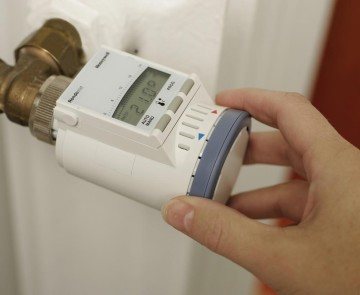

A heat meter - a device for accounting for the consumed heat carrier, is currently very profitable, since it allows you to save money by paying only for the consumed heat, excluding overpayment.
An important point is the correct choice of the type of device, depending on the installation location and design features of the heating network, as well as the conclusion of an agreement with a service organization that will monitor the technical condition of the device.
There are many models of heat meters, differing in design and size, but the principle of how a heating meter works has remained the same as on the simplest device that measures the temperature and flow rate of water at the inlet and outlet of the pipeline of a heat supply facility. Differences appear only in engineering approaches to solving this issue.
Housing heat meter working principle
We also recommend that you consider the benefits of a custom heat control system supplied to your home to keep the cost of these costs down. Optimal solutions to the problem of such savings will be found together when we look at the piping in your home.
It is possible to record the heat energy on a quarterly basis only with a horizontal wiring system for heat supply !!! *
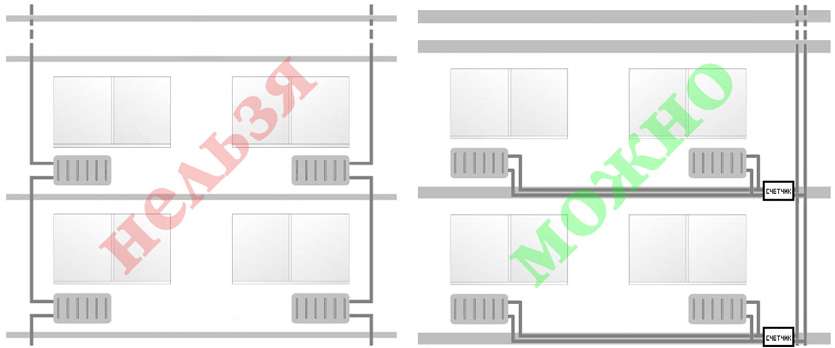

Call us or leave a request on the website, and our manager will contact you.
Our prices
| Installation cost 1 water meter | from 1700 rubles |
| Replacement cost for 1 water meter | from 1400 rubles |
| Meter installation cost | from 12,000 rubles |
| Meter replacement cost | from 7,000 rubles |
| Installing the first radiator | from 3200 rubles |
| Installing the first radiator with 2 1/2 " | from 4200 rubles |
| Jumper | 1800 rubles |
| Installing the first radiator by replacing two 3/4 " | from 4700 rubles |
| Jumper | 2000 rubles |
| Installation of the first radiator by replacing two valves 1 " | from 5000 rubles |
| Jumper | 2400 rubles |
Types of thermal heating devices
The main types of heat meters include:
- Tachometric or mechanical;
- Ultrasonic;
- Electromagnetic;
- Vortex.
And there is also a classification by field of application. For example, industrial or customized.
An industrial heat meter for heating is a general house (in apartment buildings) apparatus; it is also installed at production facilities. This unit has a large diameter from 2.5 cm to 30 cm. The range of the amount of heat carrier is from 0.6 to 2.5 m3 per hour.
An individual heating device is the unit that is installed inside the apartment. It differs in that its channels have a small diameter, namely, no more than 2 cm. And also the range of the amount of the coolant becomes from 0.6 to 2.5 m3 per hour. This meter is equipped with 2 devices, namely a heat meter and a hot water meter.
HOW THE ELECTROMAGNETIC FLOW METER WORKS
The principle is based on Faraday's Law, which states that the voltage applied to any conductor as it travels at right angles through a magnetic field is proportional to the speed of that conductor. That is, the faster the conductor moves relative to the magnetic field, the higher the voltage will be. The EMF (electromotive force) of induction E is proportional to the average flow rate of the liquid V, the inner diameter of the primary converter D and the magnetic induction B. Knowing the value of B and D, it is possible to calculate the value of the flow rate and flow rate Q:
Where k is the correction factor, (entered when calibrating the device)


